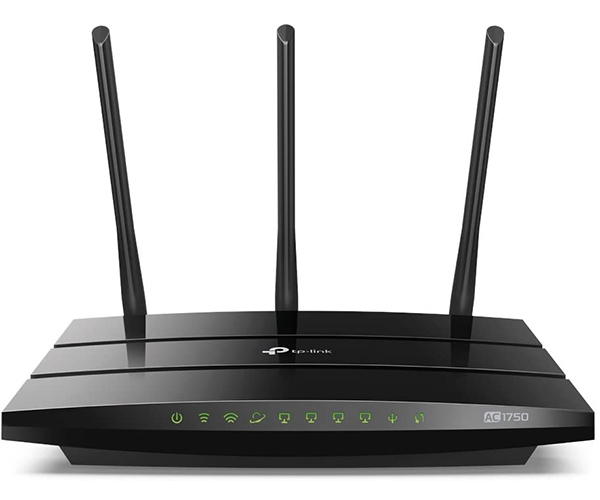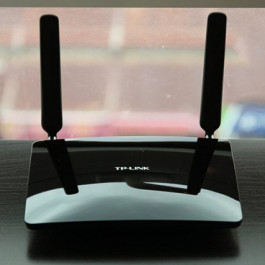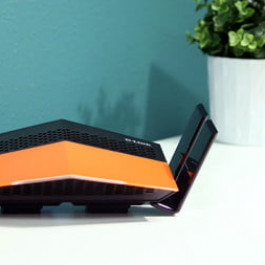
TP-Link and D-Link are two powerful products in the Wi-Fi router market. They all have high performance and are developed with the latest technology. For example, TP-Link has recently been upgraded to Wi-Fi 6 (IEEE 802.11ax), which has recently appeared on the market. It can also keep up with 4K streaming on smart devices and other intensive tasks. On the other hand, D-Link is also praised for its stable connection over a wide area. We will analyze TP-Link and D-Link to find out which of the two best meets your requirements.
Differences between TP-Link and D-Link
| Model | TP-Link (AC1750) | D-Link |
| Chipset | Compatible with IEEE 802.11ac and older, 1 USB port | DIR-842 Compatible with IEEE 802.11 a/b/g/n/ac, 4 Ethernet ports, MU-MIMO technology |
| Coverage | Up to 2,500 square feet
|
Medium-Large house |
| Speeds | Combined 1750Mbps (450Mbps on 2.4GHz + 1300Mbps on 5GHz) | Combined speed of 1367Mbps (500Mbps on 2.4GHz band + 867Mbps on 5GHz) |
| Antennas | 3 antennas (external for longer range)
|
4 high-gain antennas |
| Hardware platforms | Android, Windows, i0s, MAC and Linux-based devices
|
Android, Windows, i0s, MAC and Linux-based devices |

TP-Link vs. D-Link- compare
Speeds
TP-Link is a high-speed router that will not affect its signal strength and reliability. For example, TP-Link AC1750 supports speeds up to 1750Mbps. The first 2.4GHz frequency can reach up to 450Mbps, and the second 5GHz frequency band can reach up to 1300Mbps. For resource-intensive tasks, this ensures minimal delay and buffering.
On the other hand, D-Link has fast HD/3D speed. It is dual-band, the 2.4GHz band can support speeds up to 500Mbps, and the 5GHz band can support 867Mbps, with a total speed of up to 1,367Mbps. This is sufficient to ensure simultaneous transmission of Wi-Fi streams for multiple connected devices at the same time.
Coverage
TP-Link, such as AC1750, provides excellent coverage. This router requires only three high-gain antennas and can cover up to 2,500 square feet. Depending on the size of the home, this router can provide stable connections to all floors. The added amplifier can ensure that every connected device can receive the connection no matter how far away from the router.
D-Link is also praised for its wide coverage. The manufacturer said that the router can easily provide coverage for medium-sized houses. Due to its MU-MIMO technology, it can also do this with minimal signal attenuation and lag.
Additional accessories
For TP-Link, it simplifies many processes through the Tether application. For example, you can easily remotely manage your Wi-Fi network on your smartphone or tablet. They also provide parental control features and guest access options. Through the TP-Link app, you can monitor your child’s activities and set online time limits. You can also easily pause and restart Wi-Fi according to your preferences.
For D-Link, it also comes with the D-Link application, which can provide you with a wide range of custom settings. Using this application, you can also easily log in remotely for cloud management and complete the entire installation process. D-Link also has parental control options. For example, you can block certain unwanted content and schedule breaks for the router. This allows you to control your children and protect them from age-inappropriate content on the Internet.
Capacity
TP-Links is also known for its high capacity. For example, AC1750 can easily handle more than 50 devices connected to its Wi-Fi system. This is achieved through its powerful quad-core processor, which can keep up with resource-intensive tasks. And regardless of the number of connected devices, TP-Link uses its hardware and software functions to ensure high speed.
On the other hand, D-Link can also handle many requirements well. Its 1367Mbps speed is fast enough, and it is supplemented by an Ethernet port to ensure stable Wi-Fi performance on wired devices. Therefore, you can connect smart TVs, game consoles and other network storage devices without unnecessary delay.
Safety
In order to ensure the safety of your system and connected users, these routers have their own measures. For TP-Link devices, secure connections are the top priority. Using advanced WPA/WPA2 wireless encryption standards, you can rest assured that your entire family is safe.
For D-Link, your router can be easily protected through the app. For example, you can create a guest network specifically to provide Internet access for visitors. In the long run, this in turn can protect you from many cyber threats.
Conclusion: TP-Link or D-Link?
This article analyzes the well-known TP-Link and D-Link in the market. For TP-Link, it has faster speed (including short distance and long distance) and wide coverage. They also have additional accessories, such as smart parental controls and network security features. On the other hand, D-Link has high-gain antennas for wide coverage and Ethernet ports for wired devices. DIR-842 technology specifically enhances the Wi-Fi coverage of these routers.In addition, another characteristic of these routers is their price. Their prices are reasonable.
TP-Link and D-Link are both very popular and well-reviewed brands in the Wi-Fi router market. There is no distinction between the two, you can choose according to your needs. I would recommend TP-Link. It provides stable and reliable fast speed and wide coverage. And TP-Link is also sold at an affordable price. TP-Link is very suitable for all kinds of families, because of its simple and stylish design.
Want to know more, please click here: Cisco Router, Huawei Routers, Juniper Routers, D-Link Switches,
Read more:
How to Set Your D-Link Router?
FAQs You Need to Know About TP-Link Routers
Buyer Guide: Choose Cisco ISR Featured Routers, ISR4000, ISR1000, and More
MikroTik vs Ubiquiti: Which WiFi Router or AP for Home is Better?




